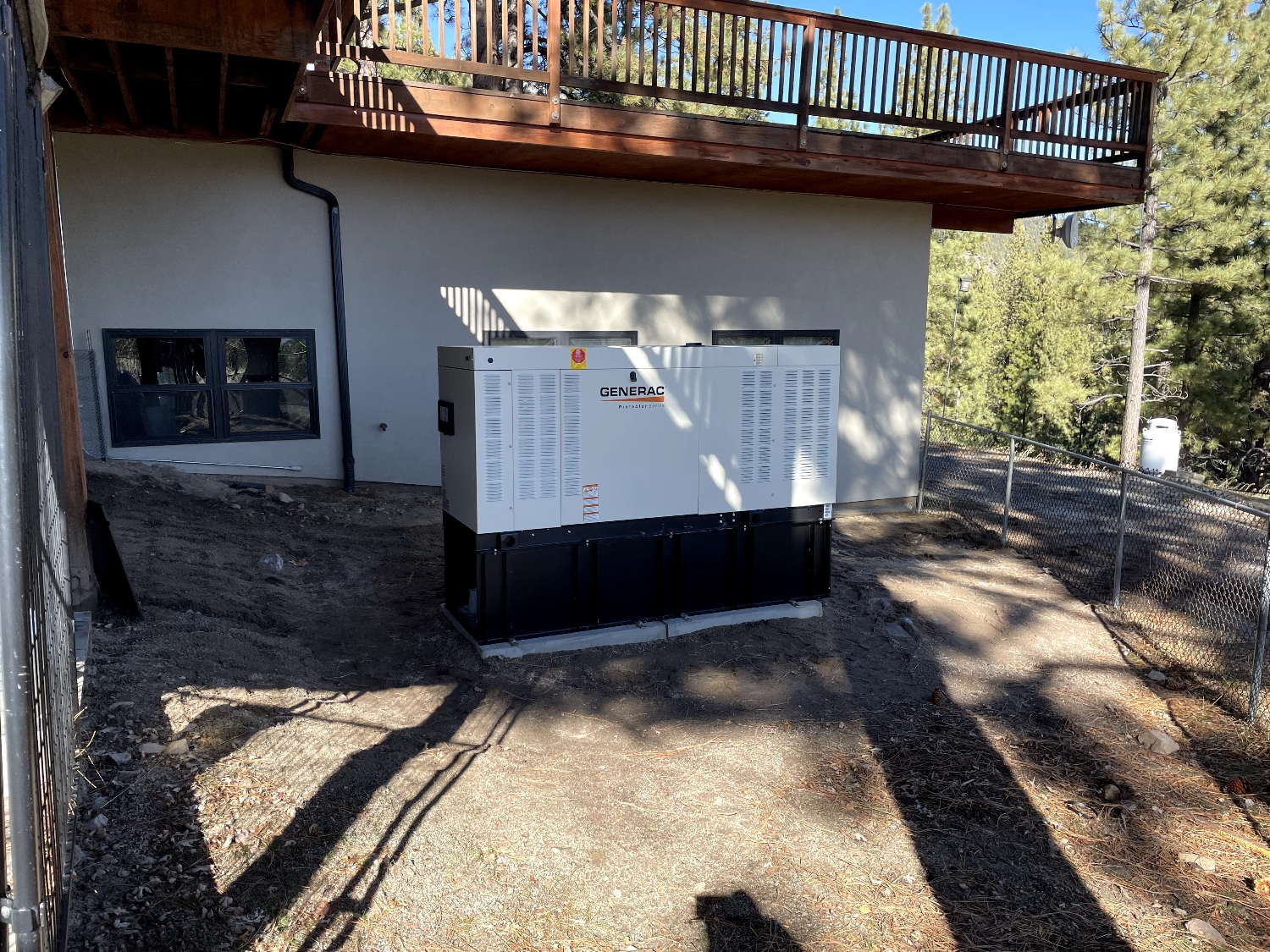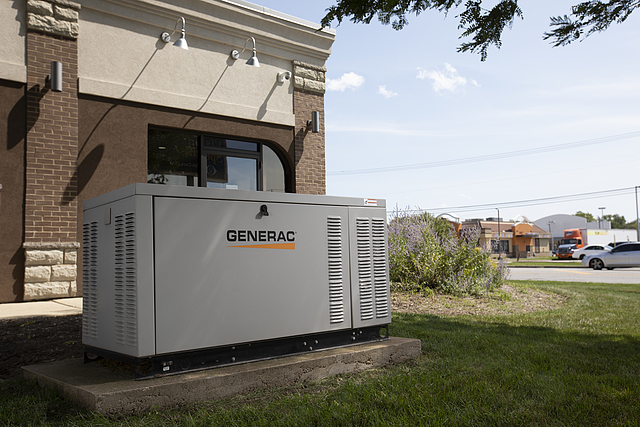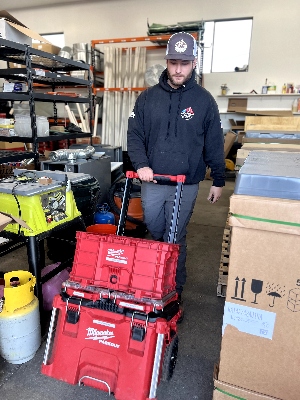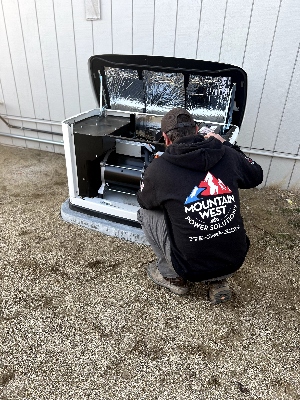Generators provide power when the main electrical supply fails, but they only work well when properly maintained. Regular generator maintenance services keep generators running when they're needed most, preventing costly breakdowns during power outages or emergencies.
Many generator owners wait until problems occur before seeking help, which often leads to expensive repairs and unreliable performance.
Professional maintenance involves more than just checking oil levels and cleaning air filters. Trained technicians inspect fuel systems, test electrical connections, and verify that safety controls work correctly. They also perform load testing to ensure the generator can handle its full capacity when needed.
Simple tasks like visual inspections can be handled by owners, while complex engine work and electrical testing require professional expertise. In this article, you’ll learn how to maintain your generator properly with trusted generator maintenance services that prevent failures and costly repairs.
Here’s what you need to know:
- Simple checks that keep your generator ready
- Maintenance intervals that actually match real world use
- Costs, quotes, and what drives price differences
- DIY tasks versus pro level maintenance
- Picking the right generator services partner
Keep reading! Understanding maintenance schedules, costs, and when to call professionals helps generator owners make smart decisions about their equipment.
Simple checks that keep your generator ready
Regular checks catch problems before they cause failures. These basic inspections take only minutes but prevent costly repairs and unexpected downtime.
The five minute visual inspection that prevents surprise failures
A quick visual check reveals warning signs that predict future problems. This inspection takes less than five minutes but catches issues that could leave you without power.
Look for fluid leaks around the oil reservoir, fuel lines, and coolant system. Even small drops indicate seals or connections need attention. Dark stains on the ground show where leaks occurred in the past.
Check belts and hoses for cracks, fraying, or loose connections. Worn belts slip during operation and reduce generator output. Cracked hoses leak fluids and overheat the engine.
Inspect the air intake and ventilation panels for blockages. Leaves, debris, or dirt restrict airflow and cause overheating. Clean intakes ensure proper cooling during operation.
Examine warning lights or alarm indicators on the control panel. Flashing lights or error codes signal specific problems that need immediate attention.
Fuel, oil, and coolant levels and when a top off is not enough
Checking fluid levels prevents engine damage and ensures reliable operation. Low fluids cause expensive repairs that simple monitoring prevents.
Oil levels should stay between the minimum and maximum marks on the dipstick. Dark, thick oil needs replacement even if levels appear adequate. Fresh oil lubricates moving parts and prevents engine seizure.
Fuel quality matters as much as quantity. Old fuel degrades and clogs filters or injectors. Fuel older than six months should be replaced with fresh gasoline or diesel.
Coolant levels must stay within the marked range on the reservoir. Low coolant causes overheating and engine damage. Check coolant color too - rusty or cloudy fluid needs replacement.
Top-offs work for minor consumption but don't fix underlying problems. Rapid fluid loss indicates leaks or mechanical issues that require professional repair.
Battery status and the quick test that saves a no start call
Dead batteries cause most generator starting failures. A simple voltage test prevents no-start situations during power outages.
Use a multimeter to check battery voltage every three months. A healthy 12-volt battery should read 12.6 volts or higher when not charging. Readings below 12.4 volts indicate a weak battery.
Clean battery terminals regularly to prevent connection problems. White or green buildup around terminals blocks electrical flow. Remove buildup with a wire brush and apply terminal protector.
Check battery fluid levels in non-sealed batteries. Low electrolyte levels damage battery cells permanently. Add distilled water to maintain proper levels.
Test the charging system by measuring voltage while the generator runs. The battery should receive 13.5 to 14.5 volts during operation. Lower readings mean the charging system needs repair.
Maintenance intervals that actually match real world use
Most generator owners follow basic schedules that don't match how they actually use their equipment. Smart maintenance timing considers both operating hours and calendar dates, plus seasonal demands that affect performance.
How frequently a generator should be serviced for reliability
Most generators need service every 6 months or after 100-200 hours of operation, whichever comes first. This dual approach prevents problems that develop during storage and heavy use periods.
Home standby generators should get professional service twice per year. These units sit idle for months, then work hard during outages. Regular checks prevent fuel system problems and battery failures.
Portable generators need attention after every 50-100 hours of use. They face harsher conditions like dust, moisture, and frequent transport. Oil changes become critical at this interval.
Commercial generators require maintenance every 3-4 months due to heavier workloads. These units often run for testing and backup power, accumulating hours faster than residential models.
Service frequency increases in harsh environments. Generators near saltwater, construction sites, or dusty areas need monthly visual checks and more frequent oil changes.
Hours versus calendar time and what matters more for you
Calendar time wins for stored generators. Fuel degrades, seals dry out, and batteries lose charge even when the unit never runs. Annual service prevents these storage-related failures.
Operating hours matter more for frequently used units. Oil breaks down from heat and contamination during operation. Air filters clog from processing combustion air. These wear items need replacement based on actual runtime.
The 200-hour rule works well for most users. It typically equals 6-12 months of normal use while preventing excessive wear from delayed maintenance.
According to research from the National Renewable Energy Laboratory (NREL), even well-maintained standby diesel generators have only about an 80% probability of supplying power during a two-week utility outage.
Track both metrics to determine the right schedule:
- Write down monthly hour readings
- Note the last service date
- Schedule service when either limit approaches
Generators used seasonally need pre-season preparation regardless of hours. A unit with 50 hours might still need service if it sat unused for 8 months.
Seasonal prep steps before storms or long trips
Spring preparation focuses on storage damage from winter. Check fuel quality, replace stale gasoline, and test the battery. Clean debris from air intake screens and exhaust areas.
Change oil if the generator sat unused for more than 4 months. Old oil contains moisture and acids that damage internal parts during the first startup.
Fall storm preparation emphasizes reliability when power fails. Test the automatic transfer switch if equipped. Verify fuel supplies and add stabilizer to stored gasoline.
Inspect electrical connections for corrosion. Clean battery terminals and check electrolyte levels. Replace spark plugs if they show wear from summer use.
Pre-trip checks for portable units include oil level, fuel system, and basic operation. Run the generator for 15 minutes under load to verify normal performance.
Post-season storage requires fuel stabilizer or complete fuel drainage. Fog the engine with storage oil to prevent internal corrosion during long periods of inactivity.
Costs, quotes, and what drives price differences
Generator maintenance costs range from $171 to $395 per visit, with annual expenses typically falling between $200 to $600.
According to a cost analysis by the National Renewable Energy Laboratory (NREL), annual maintenance represents a significant portion of total operating expenses for standby generators, especially in long-term ownership.
Service prices depend on what's included, how often you schedule visits, and whether you choose individual appointments or ongoing contracts.
How much a generator service typically costs and why it varies
Most homeowners pay between $171 and $395 for a single generator maintenance visit. Annual maintenance costs usually range from $200 to $600.
Several factors affect these prices. Generator size plays a major role in cost differences. Larger whole-house units require more time and materials than smaller portable models.
The complexity of the system also impacts pricing. Generators with advanced features or hard-to-reach components take longer to service.
Location affects costs too:
- Urban areas typically charge more than rural locations
- Regional labor rates vary significantly
- Local competition influences pricing
The generator's age and condition matter as well. Older units often need extra attention and replacement parts. Well-maintained generators cost less to service than neglected ones.
Some companies charge flat rates while others bill hourly. Flat-rate pricing provides predictable costs but may be higher for simple jobs.
What a standard tune up includes and what is extra
A basic generator tune-up covers essential maintenance tasks to keep the unit running properly.
Standard tune-up typically includes:
- Oil and filter changes
- Spark plug inspection and replacement
- Air filter cleaning or replacement
- Battery testing and terminal cleaning
- Basic visual inspection of connections
- Test run to verify operation
Most companies include these services in their base price. The visit usually takes 1-2 hours to complete.
Extra services that cost more:
- Coolant system service
- Transfer switch testing
- Load bank testing
- Fuel system cleaning
- Major part replacements
- Electrical repairs
These additional services can add $50 to $300 or more to the total cost. Some problems only become apparent during the inspection.
Companies should provide clear quotes that separate standard services from extras. This helps homeowners understand what they're paying for and avoid surprise charges.
Contracts versus one off visits and when each pays off
Annual maintenance contracts often cost less per visit than individual service calls. Most contracts include one or two visits per year at a discounted rate.
Contract benefits:
- Lower per-visit costs
- Priority scheduling
- Discounts on repairs
- Consistent service history
Contracts work best for homeowners who want regular maintenance without remembering to schedule appointments. They typically save $50 to $100 annually compared to individual visits.
One-off visits make sense for newer generators still under warranty. They also work for homeowners who prefer to schedule maintenance themselves.
When contracts pay off:
- Generators over 3 years old
- Units that run frequently
- Areas with severe weather
- Homeowners who forget regular maintenance
Individual visits cost more but offer flexibility. You can choose different service providers or skip years if the generator needs minimal attention.
Consider your generator's age, usage, and your maintenance habits when deciding between contracts and individual visits.
DIY tasks versus pro level maintenance
Some generator maintenance tasks can be handled safely by homeowners, while others require professional expertise to prevent damage and maintain warranty coverage. Knowing which repairs to attempt and when to call experts helps keep generators running reliably while avoiding costly mistakes.
Safe homeowner tasks that cut downtime and costs
Basic generator maintenance tasks can be performed by most homeowners with simple tools and basic mechanical knowledge. Oil changes represent the most common DIY task, requiring only a wrench, funnel, and appropriate oil type.
Homeowners can safely replace air filters and fuel filters by following the manufacturer's instructions. These components are typically accessible and require no special tools.
Battery maintenance includes cleaning terminals, checking fluid levels, and testing voltage with a basic multimeter. Most battery issues involve loose connections or corrosion buildup.
Visual inspections help catch problems early. Check for:
- Oil leaks around the engine
- Loose bolts or connections
- Damaged wiring or hoses
- Debris blocking air vents
Spark plug replacement on smaller generators requires only a spark plug wrench and gap gauge. Clean plugs every 100 hours of operation or replace them annually.
Basic cleaning tasks like removing debris from cooling fins and wiping down surfaces prevent overheating and corrosion. Use compressed air to blow out dust from electrical components.
When to call generator maintenance companies to avoid damage
Professional generator repair services become necessary when dealing with electrical systems, fuel injection components, or warranty-covered parts. Load bank testing requires specialized equipment that measures the generator's ability to handle its rated capacity.
Transfer switch problems involve high-voltage electrical work that poses serious safety risks. Licensed electricians should handle all transfer switch repairs and installations.
Fuel system repairs on diesel generators require professional expertise. Injection pumps, fuel lines, and electronic controls need specialized tools and training to service properly.
Control panel malfunctions often involve complex wiring diagrams and computer diagnostics. Incorrect repairs can damage expensive electronic components or void warranties.
Engine rebuilds and major mechanical work exceed DIY capabilities. Internal engine problems require professional assessment to determine repair costs versus replacement options.
Professional electric generator repair ensures compliance with local codes and maintains manufacturer warranties. Attempting complex repairs without proper training often creates more expensive problems.
Signs a repair is due before a small issue grows
Starting problems indicate potential battery, fuel, or ignition system issues. Generators that crank slowly or require multiple attempts to start need immediate attention.
Unusual noises during operation signal mechanical problems. Knocking, grinding, or squealing sounds often precede major component failures if left unaddressed.
Excessive smoke from the exhaust suggests engine problems. Blue smoke indicates oil burning, while black smoke points to fuel system issues requiring professional diagnosis.
Voltage fluctuations or power quality problems affect connected equipment. Use a multimeter to check output voltage - readings outside manufacturer specifications require professional generator repair.
Frequent shutdowns or failure to maintain load indicate serious problems. Generators that trip offline during normal operation need immediate professional assessment.
Fuel consumption increases without corresponding load changes suggest engine efficiency problems. Monitor fuel usage patterns to catch developing issues early.
Picking the right generator services partner
The best generator maintenance companies combine proper credentials with fast response times and detailed record keeping. Smart customers ask specific questions about technician training, parts availability, and warranty compliance before signing any service agreement.
Certifications, response times, and parts access that matter
Generator maintenance companies need proper certifications from major manufacturers like Generac, Caterpillar, and Cummins. These credentials prove technicians know how to work on specific equipment safely.
Emergency response time makes a huge difference during power outages. Look for companies that guarantee service within 4-6 hours for critical situations.
Parts access separates good companies from great ones. The best providers stock common components locally or have overnight shipping agreements with manufacturers.
Ask about technician training levels. Some companies employ factory-trained specialists while others use general electricians. Factory training ensures proper diagnosis and repair techniques.
Multi-brand service capability helps customers with mixed generator fleets. Companies that service multiple manufacturers reduce the need for separate service contracts.
Warranty friendly recordkeeping that protects your investment
Proper documentation protects generator warranties and proves compliance with manufacturer requirements. Generator services must keep detailed records of every maintenance visit.
Service reports should include:
- Date and time of service
- Parts replaced with serial numbers
- Oil analysis results
- Battery voltage readings
- Coolant levels and condition
Digital record systems work better than paper files. Cloud-based platforms let customers access service history anytime and share records with warranty departments.
Photos of repairs and component conditions add extra protection. Visual documentation helps resolve warranty disputes and shows equipment deterioration over time.
Maintenance schedules must follow manufacturer guidelines exactly. Missing required services or using wrong parts can void expensive warranties.
Questions to ask before you book a service visit
Smart customers verify company credentials before scheduling any work. Ask for proof of licensing, insurance, and manufacturer certifications.
Key questions include:
- How quickly can you respond to emergency calls?
- Do you stock parts for my generator model?
- What training do your technicians have?
- Can you provide digital service records?
Request references from customers with similar generators. Commercial clients have different needs than residential customers.
Pricing structure should be clear and predictable. Some companies charge flat rates while others bill hourly. Ask about travel time, diagnostic fees, and parts markups.
Emergency service rates often cost double normal prices. Understand after-hours pricing before you need urgent repairs.
Verify the company can handle your generator size. Small residential contractors may lack equipment for large commercial units.
Conclusion
Generator maintenance services play a vital role in keeping backup power systems running smoothly. Regular upkeep prevents costly breakdowns and extends equipment life.
Professional technicians bring specialized skills to complex repairs. They can quickly diagnose problems and get generators back online fast.
Companies should plan their maintenance at least 12 months ahead. This helps avoid scheduling conflicts during critical times.
The generator maintenance market continues to grow. It currently has a value of $3.36 billion and shows strong health.
Modern software tools help optimize maintenance work. They automate scheduling and track jobs in real time. Mobile access lets technicians work better on-site.
Regular maintenance keeps generators ready when power outages happen. It ensures reliable performance during emergencies.
Businesses that invest in proper maintenance save money long-term. They avoid expensive emergency repairs and equipment replacement.
Working with trained professionals gives the best results. They understand complex generator systems and safety requirements. Maintenance services offer peace of mind. Owners know their backup power will work when needed most.
Schedule generator maintenance with Mountain West today to keep your backup power system reliable and outage-ready.









